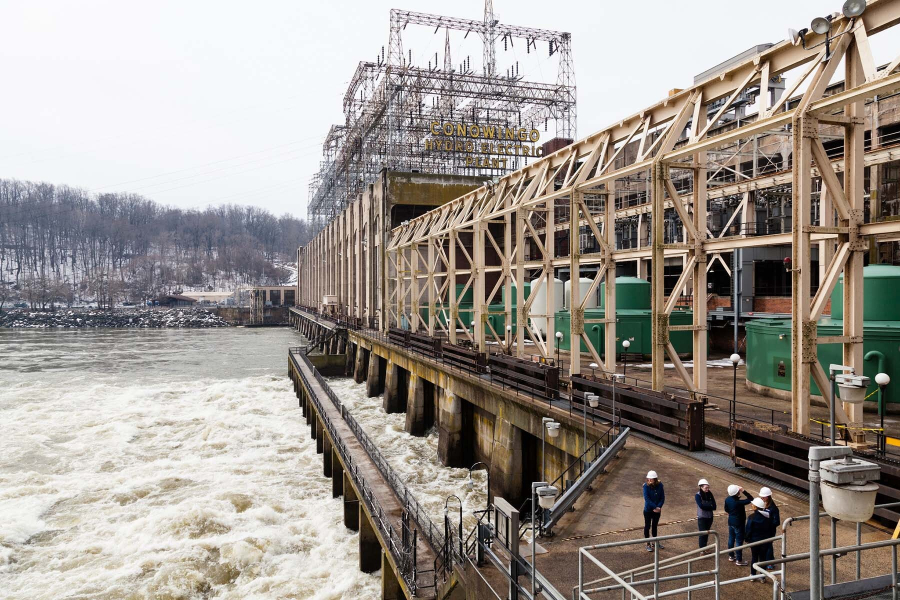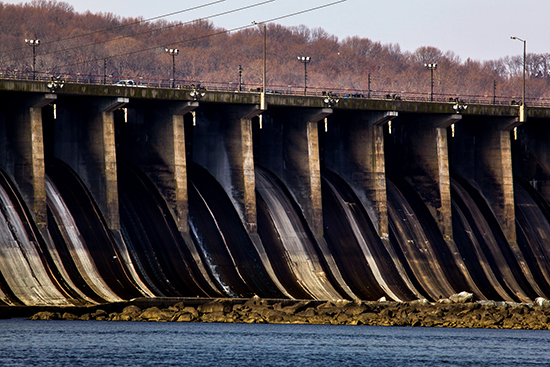Reducing upstream pollution could ease effects of full Conowingo reservoir
Lowering nutrient and sediment loads more effective than dredging the dam.

A team of scientists has found that reducing pollution in the Susquehanna River watershed—which includes portions of New York, Pennsylvania and Maryland—could ease the environmental effects of an “essentially full” reservoir behind the Conowingo Dam, whose pollution-trapping capacity has diminished in recent years.
The reservoir behind the Conowingo Dam—as well as those behind the Holtwood and Safe Harbor dams—has for decades trapped particles of sediment flowing down the Susquehanna River, as well as the nutrients that are often attached. But according to research from the Lower Susquehanna River Watershed Assessment (LSRWA) team, this reservoir is full. The once-effective “pollution gate” is trapping smaller amounts of sediment and nutrients and, during large storms, sending more of these pollutants into the Susquehanna River more often.
While researchers explored strategies for managing sediment at the dam, the team found that reducing pollution loads upstream of the dam would pose a more effective solution to the “full reservoir” problem. Indeed, dredging, bypassing or other operational changes would come with high costs and low or short-lived benefits. But adhering to the Chesapeake Bay’s “pollution diet”—and taking additional steps to reduce pollution where possible—would offer management flexibility and environmental benefits.

The Chesapeake Bay Total Maximum Daily Load (TMDL) was established in 2010 to reduce nutrient and sediment loads across the watershed. Lowering these pollutants is integral to restoring the health of the Bay: excess sediment can cloud the water and harm underwater grasses, fish and shellfish, and nutrients can fuel the growth of harmful algae blooms. While the LSRWA team did find that the effects of the sediment that “scour” from the Conowingo reservoir cease once it settles to the bottom of the river, the effects of nutrient pollution linger. Green infrastructure, forest buffers and sound farm and lawn management can help businesses, landowners and individuals contribute to a restored Chesapeake.

Comments
There are no comments.
Thank you!
Your comment has been received. Before it can be published, the comment will be reviewed by our team to ensure it adheres with our rules of engagement.
Back to recent stories